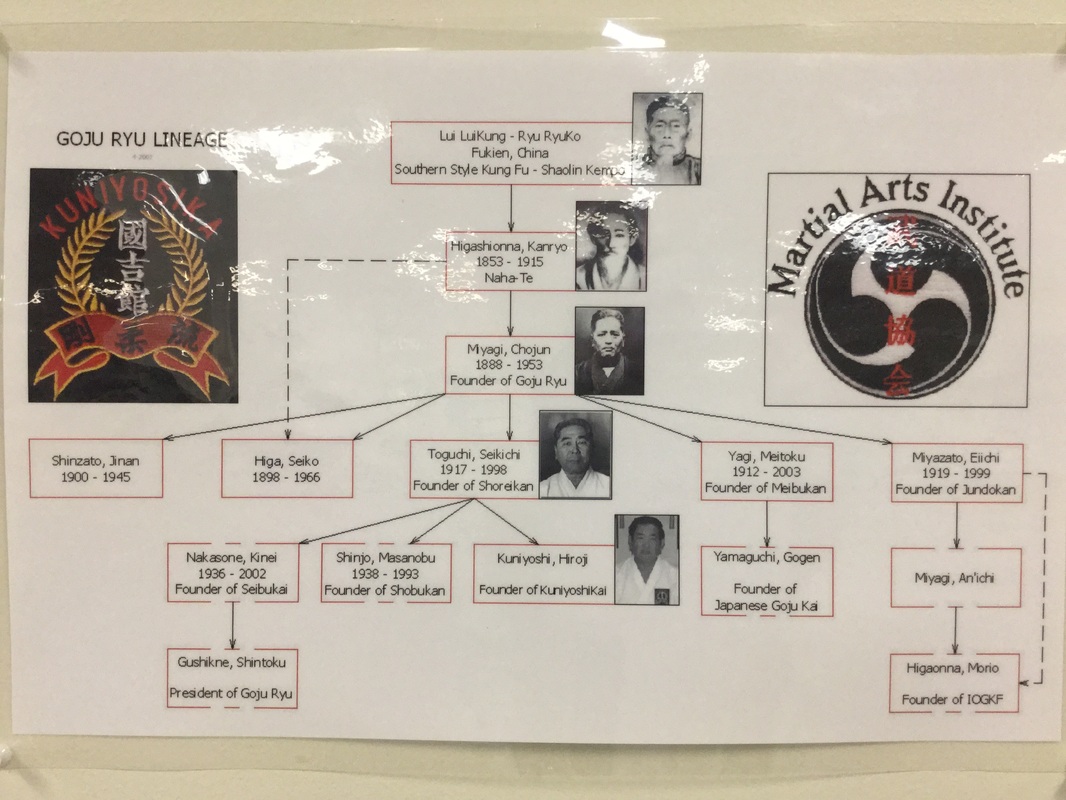History Overview
Karate-do, the way of the empty hand, along with Kobudo, ancient weapon way, trace their roots back for centuries. The martial arts were originated in China by monks as a means of improving ones self. Through their close association with the Chinese, much of the Chinese teachings were passed on to the Okinawans. The Okinawans merged the teaching of the Chinese martial arts in with their own native system of combat known as Okinawa Te (hand). This art form was very popular on Okinawa and still is today. It is considered one of their national treasures and is closely guarded.
The result of Chinese instruction in Okinawa and Okinawans returning home with exposure to Chinese fighting arts, was the spread of kempo (Chinese martial art) throughout Okinawa. The banning of weapons in 1470 during the reign of King Sho Shin spurred the birth of two main schools of combat. The first being Okinawa Te and the second being Ryukyu (Okinawan) Kobudo. Te was developed and practiced largely by members of the nobility. Ryukyu Kobudo was mostly practiced by farmers and fisherman. It focused on the study of farm implements and fishing tools as weapons.
Practice in both methods of combat took place in private and mostly by night. The golden age of Okinawa continued until its invasion by Japan. The invasion of Okinawa by the Satsuma clan in 1609 continued the ban on weapons which further fueled the growth of underground fighting arts.
The modern history of Goju Ryu Karate begins with Kanryo Higaonna traveling to China to study kempo and returning to Okinawa to integrate it into the Okinawan art of Naha-te (Okinawa Te practiced in the city of Naha). His most famous student was Chojun Miyagi (1888 - 1953) who founded the Goju Ryu system. The instructors at the Martial Arts Institute trace their lineage directly back to Chojun Miyagi and Kanryo Higaonna.
Kobudo was handed down in a different manner than Karate. It was based around individual weapons which students would become proficient in the use of. Sensei Webb's teachers spent many years traveling to different masters and training in the use of each Okinawan weapon. These were compiled into the system that is today known as Okinawan Kobudo. The Martial Arts Institute passes on the teachings of Kobudo in their purest form.
Karate-do, the way of the empty hand, along with Kobudo, ancient weapon way, trace their roots back for centuries. The martial arts were originated in China by monks as a means of improving ones self. Through their close association with the Chinese, much of the Chinese teachings were passed on to the Okinawans. The Okinawans merged the teaching of the Chinese martial arts in with their own native system of combat known as Okinawa Te (hand). This art form was very popular on Okinawa and still is today. It is considered one of their national treasures and is closely guarded.
The result of Chinese instruction in Okinawa and Okinawans returning home with exposure to Chinese fighting arts, was the spread of kempo (Chinese martial art) throughout Okinawa. The banning of weapons in 1470 during the reign of King Sho Shin spurred the birth of two main schools of combat. The first being Okinawa Te and the second being Ryukyu (Okinawan) Kobudo. Te was developed and practiced largely by members of the nobility. Ryukyu Kobudo was mostly practiced by farmers and fisherman. It focused on the study of farm implements and fishing tools as weapons.
Practice in both methods of combat took place in private and mostly by night. The golden age of Okinawa continued until its invasion by Japan. The invasion of Okinawa by the Satsuma clan in 1609 continued the ban on weapons which further fueled the growth of underground fighting arts.
The modern history of Goju Ryu Karate begins with Kanryo Higaonna traveling to China to study kempo and returning to Okinawa to integrate it into the Okinawan art of Naha-te (Okinawa Te practiced in the city of Naha). His most famous student was Chojun Miyagi (1888 - 1953) who founded the Goju Ryu system. The instructors at the Martial Arts Institute trace their lineage directly back to Chojun Miyagi and Kanryo Higaonna.
Kobudo was handed down in a different manner than Karate. It was based around individual weapons which students would become proficient in the use of. Sensei Webb's teachers spent many years traveling to different masters and training in the use of each Okinawan weapon. These were compiled into the system that is today known as Okinawan Kobudo. The Martial Arts Institute passes on the teachings of Kobudo in their purest form.
